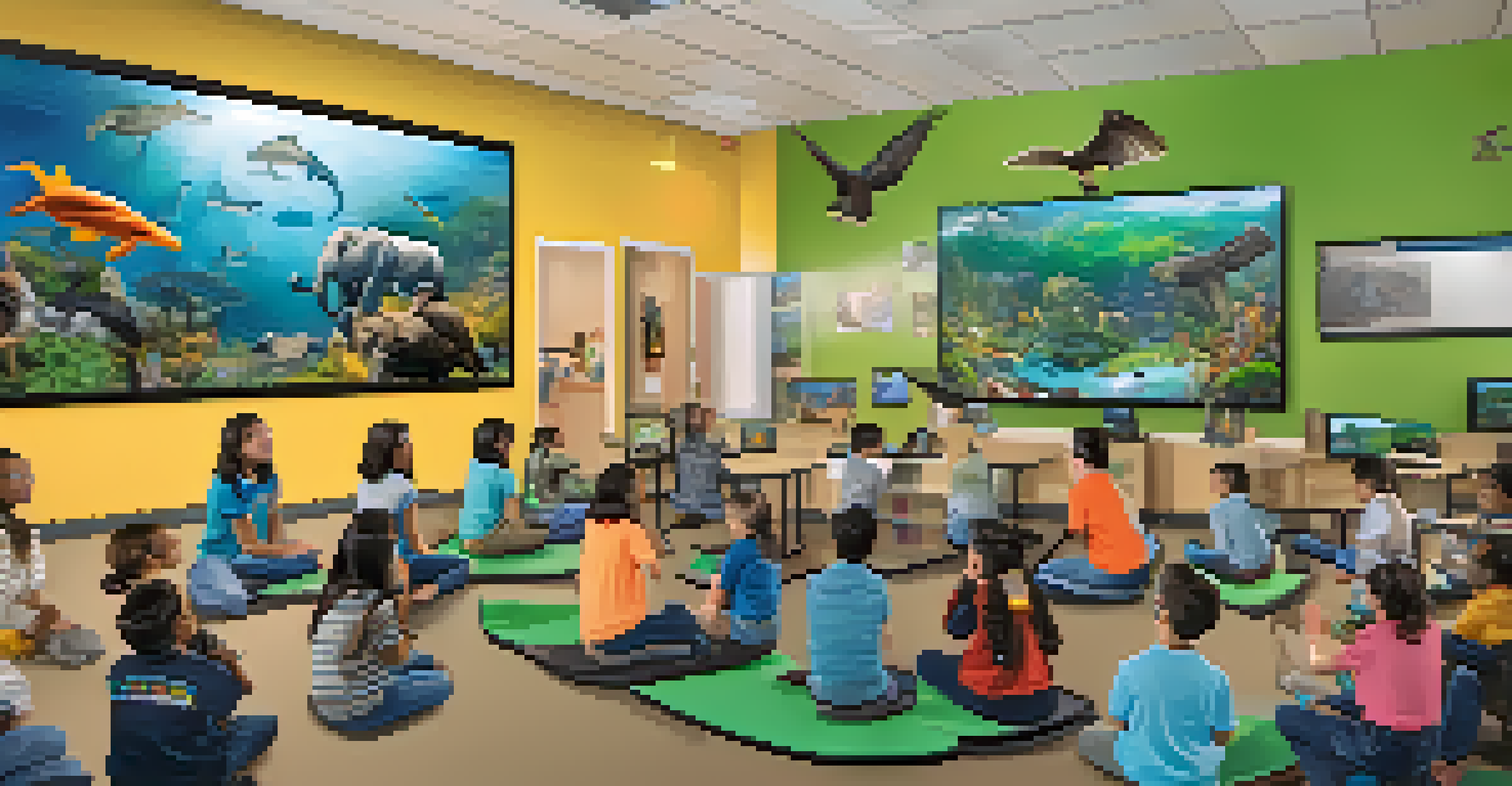The Importance of Education in Wildlife Conservation in Thailand

Understanding Wildlife Conservation and Its Challenges
Wildlife conservation refers to the practice of protecting animal species and their habitats. In Thailand, this is particularly crucial due to the rich biodiversity that the country boasts. However, various challenges such as habitat loss, poaching, and climate change threaten these efforts.
The future will be shaped by the decisions we make today regarding conservation and wildlife protection.
The complexity of these issues often requires comprehensive solutions that involve local communities, policymakers, and conservationists. Without a clear understanding of the problems, efforts can be misdirected or ineffective. Education serves as the foundation for awareness and action.
By educating individuals about the importance of wildlife and the ecosystems they inhabit, we can foster a culture of conservation. This awareness can lead to informed decisions and community-led initiatives that directly combat these challenges.
The Role of Education in Raising Awareness
Education plays a crucial role in raising awareness about wildlife conservation. It helps individuals understand the intrinsic value of wildlife and ecosystems, which can often be overlooked. For example, students learning about the importance of elephants in Thai culture can foster a sense of pride and responsibility towards their protection.

Schools and community programs that focus on conservation education create environments where young people can engage with these topics. Workshops, field trips, and interactive lessons make learning about wildlife exciting and relevant. This engagement often translates to a lifelong commitment to conservation.
Education Drives Conservation Efforts
Raising awareness through education fosters a culture of wildlife conservation and empowers communities to take action.
Moreover, educated communities are more likely to participate in conservation initiatives. When locals understand the benefits of preserving wildlife, they become advocates for change, which is essential for successful conservation efforts.
Training Future Conservation Leaders
Education is not just about awareness; it's also about building skills for the future. Training programs in wildlife conservation help equip the next generation of leaders with the necessary tools to tackle environmental issues. These programs often include fieldwork, research, and hands-on experience.
Education is the most powerful weapon which you can use to change the world.
In Thailand, universities and environmental organizations are increasingly offering specialized courses in conservation biology, ecology, and sustainable practices. By nurturing young talents, we are creating a workforce that is knowledgeable and passionate about wildlife conservation.
These future leaders will be pivotal in developing innovative solutions to the challenges faced by wildlife in Thailand. Their education can lead to breakthroughs in policies and practices that prioritize both conservation and community needs.
Community Engagement Through Educational Programs
Community engagement is vital for effective wildlife conservation, and education acts as a bridge to fostering this connection. Educational programs that involve local communities can create a sense of ownership over conservation efforts. Workshops and seminars can teach locals about sustainable practices that benefit both wildlife and their livelihoods.
For instance, training fishermen on sustainable fishing techniques can help protect endangered species while ensuring their economic stability. When communities see the direct benefits of conservation education, they are more likely to engage and invest in these initiatives.
Community Engagement is Essential
Involving local communities in conservation initiatives creates a sense of ownership and commitment to protecting wildlife.
Such programs not only educate but also empower communities to take action. By involving them in conservation efforts, we create a collective responsibility that can lead to more substantial and lasting change.
The Impact of Technology on Conservation Education
In today's digital age, technology plays a significant role in enhancing conservation education. Online platforms, social media, and mobile apps can disseminate information quickly and widely. This allows for a broader reach, engaging audiences that might not have access to traditional educational resources.
In Thailand, organizations are leveraging technology to create interactive learning experiences about wildlife and conservation. Virtual reality tours of national parks or educational videos about endangered species can captivate and inform individuals, especially the younger generation.
By integrating technology into education, we can make learning about conservation more accessible and engaging. This modern approach can inspire a sense of stewardship for wildlife, encouraging more people to get involved.
Collaborative Efforts Between Schools and Conservation Groups
Collaborations between educational institutions and conservation organizations can amplify the impact of wildlife education. These partnerships can lead to resource sharing, expertise exchange, and community outreach opportunities. Schools can benefit from materials and experiences provided by conservation groups, while organizations gain access to young minds eager to learn.
For example, joint initiatives can involve students in real-world conservation projects, such as habitat restoration or wildlife monitoring. These experiences not only educate but also instill a sense of purpose and connection to the environment.
Technology Enhances Learning Access
Leveraging technology in conservation education makes learning more accessible and engaging, especially for younger audiences.
Such collaborations can also create role models for future conservationists. When students see successful professionals in the field, they are more likely to envision themselves as future leaders in wildlife conservation.
The Future of Wildlife Conservation Education in Thailand
Looking ahead, the future of wildlife conservation education in Thailand is promising. As awareness continues to grow, more resources and attention are being directed towards educational programs. This trend is essential for fostering a new generation that prioritizes environmental stewardship.
Innovative teaching methods and increased collaboration will likely enhance educational outcomes. By incorporating local knowledge and cultural values into the curriculum, we can create more relevant and impactful programs that resonate with students.

Ultimately, a strong emphasis on education will be pivotal in addressing the challenges facing wildlife conservation. By empowering individuals with knowledge and skills, we can cultivate a society that values and protects the rich biodiversity of Thailand.